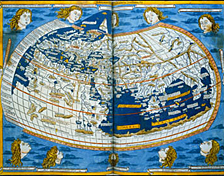>US/AZ Government
>World History
>Nogales
High School Web
Page
Class stuff...
>A
letter to my students
>Course
Guide
in
PDF
>Photos of Old
Nogales
>Socartic
Seminar
Grading
>The
Habits of Mind,
Heart and Effectiveness
>Position Papers
Constitution Info
>The
Founders' Constitution
>The
Federalist
Papers
>Constitution Basics
>The Constitution
Society
>Arizona Legislature
>Alexis de Tocqueville, Democracy in America
|
The Human Experience World History and Geography |
|
"How can knowledge of the past be used
as a tool for success and self defense in the present?"
|
|
Lesson Plans
|
Assignments
|
||
|
|
|||
|
Extra Credit Geography
|
World
History Articles and Web Sites for Extra
|
||
|
Video
|
|
Six Themes in World History
|
|
1. Change and Tradition.
2. Getting Along with Other People
3. Human Impact
4. Customs and Tradition - Continuity - Systems of social structure and gender structure (comparing major features within and among societies, and assessing change and continuity). 5. Art, Music and Religion
6. Political- Changes in functions and
structures of states and in attitudes toward states and political
identities |
|
The Five Themes in Geography
The Five Themes were developed by the National Council for Geographic Education to provide an organizing framework for the presentation of geographic materials. The Five Themes are as follows: 1. Location:
Position on the Earth's Surface (Absolute/Relative). Geographic study
begins with the location of places on the earth. Places have absolute
locations that pinpoint them on the earth, and relative locations that
place each location in respect to other locations. For example, North
Dakota has an absolute location that can be pointed to on any basic
map. It also has a relative location in that it has a location within
the economic system based on its characteristics and location within
the world market. North Dakota has its absolute location's
characteristics for soil and climate, yet the success of wheat growing
is also related to its location to the edge of more expensive arm land
to the east. |
|
Arizona Academic Standards
World History and Geography |
|
World History Info
Links
|
|
| World Hsitory: Connections to today |
|
| LacusCurtius: Into the Roman World |
Roman Coins |
| Best of History Web Sites | The Roman Empire in the First Century |
| National Geographic History News | |
| The Journal of World History | History.com>World History |
| History Now | Geography from socialstudiesforkids.com |
| Eye Witness History | Digital History |
| Internet World History Source Book | Discovery Channel - World History Lesson Plans Library |
| History Central.com | History News Index |

